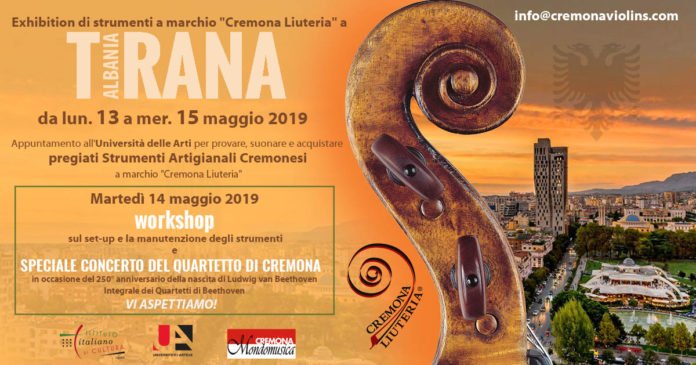CREMONA, JUNE 16 – The South-East European Experts Network on Intangible Cultural Heritage, established 12 years ago by UNESCO to support the implementation of the 2003 Convention for the Safeguarding of the Intangible Cultural Heritage in the region, is meeting June 16-18 in Cremona to allow participants to develop their institutional and operational capacities on Intangible Cultural Heritage-related policy frameworks for safeguarding, with special focus on the engagement of local community actors.
To this end, the programme combines presentations with workshop discussions and group exercises led by technical facilitators, taking the “Traditional Violin Craftsmanship in Cremona” (inscribed on the Representative List of the Intangible Cultural Heritage of Humanity in 2012) as case study, while encouraging participants to share their respective experiences at country level.
Cremona violin artisanship makes for an interesting case study for various reasons, including its strong emphasis on quality and its use of local expertise and standards. Violin-makers attend a specialized school, based on a close teacher-pupil relationship, before being apprenticed in a local workshop, where they continue to master and perfect their techniques – a never-ending process.
Each violin-maker constructs from three to six instruments per year, shaping and assembling more than 70 pieces of wood around an inner mould by hand, according to the different acoustic response of each piece. No two violins are alike. Every part of the instrument is made using specific wood that has been carefully selected and naturally seasoned. No semi-industrial or industrial materials are used. Craftsmanship requires a high level of creativity: the craftsperson has to adapt general rules and personal knowledge to every instrument.
The meeting is providing an opportunity to discuss and advance cooperation on intangible cultural heritage with and among Member States and other relevant partners in South-East Europe, confirming the importance of intangible cultural heritage as a mainspring for dialogue, integration and sustainable development in the region.
Participants in this year’s meeting represent ministries of culture and/or other relevant authorities from the Member States covered by the geographical mandate of the UNESCO Regional Bureau for Science and Culture in Europe (Albania; Bosnia and Herzegovina; Bulgaria, Croatia; Greece; Montenegro; North Macedonia; Republic of Moldova; Romania; Serbia; Slovenia; and Turkey; plus Italy as the host country).
The 13th annual meeting is hosted by the City of Cremona, Italy, with the support of the Cremona Cultural District and other local partners. The event is organized by UNESCO through its Regional Bureau for Science and Culture in Europe, thanks to the generous support of the Italian Ministry for Cultural Heritage and Activities and of the Regional Centre for the Safeguarding of Intangible Cultural Heritage in South-East Europe (Category 2 Centre operating under the auspices of UNESCO, based in Sofia, Bulgaria). (@OnuItalia).

